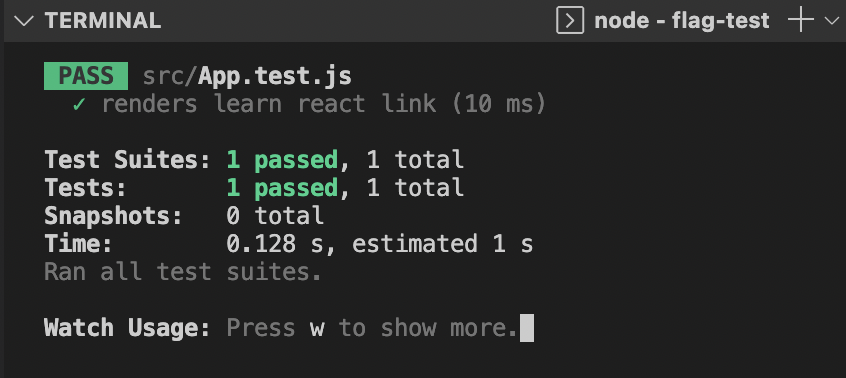Testing frontend feature flags with React, Jest, and PostHog
Mar 16, 2023
Combining both testing and feature flags can be a bit tricky. Tests generally check only one variant of the feature flag and leave other code untested. If you want to test the code behind feature flags, you must set up your tests to do so.
To do this, you need to mock the flags to access the other variations. This tutorial shows you how to do that by creating a React app with Jest tests, adding PostHog, then setting up tests that work with feature flags by mocking PostHog.
Creating a React app
First, create a basic React app. Make sure Node is installed then run npx create-react-app with the name of your app. We named ours flag-test.
After creating the app, in the newly created flag-test folder, a test is automatically created in src/App.test.js that looks like this:
This test uses Jest, a popular JavaScript testing library. It passes when all the default code is in place and is a test to build on as we build out our app.

Adding PostHog
If we’ve created our React app and run our first test, we want to add PostHog. First, we need a PostHog instance (sign up for free). We then need our project API key and instance address from it. Once we have them, in our React app, install posthog-js:
Next, add the PostHogProvider to index.js. This enables access to PostHog throughout your React app.
With this setup, events are automatically captured, and we can set up our React feature flag.
Setting up our feature flag
In PostHog, go to the "Feature Flags" tab and click the "New feature flag" button. Set the key to test-flag and the release condition to 100% of users then click "Save."
With the flag created, go to src/App.js in our React app, import useFeatureFlagEnabled from posthog-js/react, and use it to check the test-flag. We have access to this because we set up the PostHogProvider earlier. We then conditionally render either a link to PostHog if the flag is enabled or the default "Learn React" link if not. This looks like this:
When we run the app again, the main link on the page changed to "Go to PostHog."

Making our tests and feature flags work together
When we run tests now, it still passes, but only tests part of the code. To test all of it, we must handle feature flags by mocking PostHog. To do this, first, install jest-mock
In src/App.test.js, mock useFeatureFlagEnabled. Create a new test where the mocked useFeatureFlagEnabled function return true, then checks the "Go to PostHog" version of the flag.
This tests both variants of the flag. You can use this mocking strategy to test other PostHog methods, components, and code throughout your app.
Further reading
- Master Feature Flags: Best practice, tips and examples
- How to run Experiments without feature flags
- How to do a canary release with feature flags in PostHog
